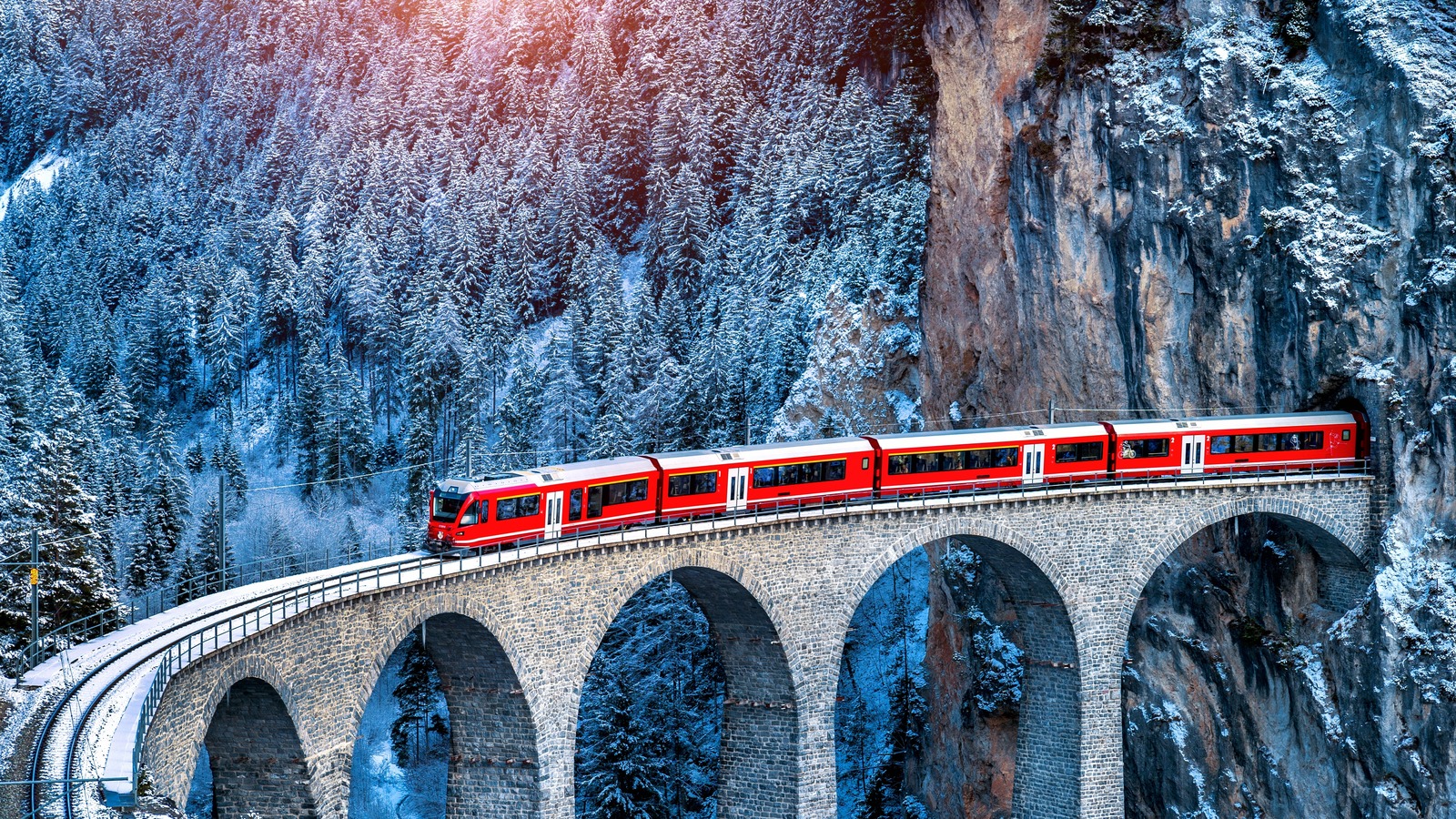
The Scientific Reason This Is The Safest Spot To Sit On A Train – Grunge
Every time a train crash hits the news, people tend to revisit the old, long-settled question: “How safe are trains, anyway?” The truth is that crashes and disasters make the news precisely because they’re so uncommon, not because they happen all the time. People tend to judge the likelihood of future events based on the prominence of events in memory and not real statistical data, a phenomenon dubbed the “availability heuristic” by psychologists. Trains are actually quite safe, resulting in 0.04 deaths per 100 million miles traveled, per aviation lawyers Panish, Shea, Boyle, Ravipudi LLP. Earth, for the record, is about 25,000 miles in circumference. That means (math drumroll) you’ve got to travel around Earth 100,000 times to get one train death per year, worldwide.
And yet, as the saying goes, accidents happen. Sure, there’s always a possibility that a train might get into an accident, same as there’s a possibility that you might trip walking down the stairs and break your neck on the way out of the door in the morning. So for the cautious in the audience, where should you sit on a train to reduce your likelihood of injury or death? First things first: please dispense with any and all Hollywood notions of what train crashes look like. Live Science says that trains derail nine times more than they collide, with the front cars likely derailing first. Collisions, meanwhile, happen at the front or back. And so, it’s the middle of the train that’s safest.
The safety of the middle
 lunopark/Shutterstock
lunopark/Shutterstock
On NBC News, rail safety expert Larry Mann confirms that the middle of the train is safest, no matter that no place is completely safe if an accident happens. Furthermore, while sitting next to a window might get someone tossed out if the train derails and rolls, sitting further inside might see people “tossed around like rag dolls.” And yet, he said that people in the middle of the train “usually survive” if there’s a serious accident. In his personal life, he refuses to sit in the front car and recommends that his wife head toward the middle section of the train. Even more specifically, Live Science reports that Ross Capon, president of the National Association of Railroad Passengers, recommends sitting “one or two [cars] back from the middle” for optimum safety.
Even so, it’s important to remember how safe trains are, especially in comparison to car accidents. Forbes reports a mind-blowing 5.2 million car crashes in the United States in 2020, for instance. Over 3.6 million crashes resulted in property damage, nearly 1.6 million resulted in personal injury, and almost 36,000 were fatal. And train fatalities for that same year? Less than 800, per Statista. These numbers are comparable to train crashes in the very train-filled EU, with 800 dying from crashes in 2019, per Eurostat. That’s out of 8.2 billion annual travelers, however — yes, billion — also per Eurostat. That means that 0.0000000975% of 2019 EU train customers died in accidents.
The woeful state of U.S. passenger trains
 Denis Belitsky/Shutterstock
Denis Belitsky/Shutterstock
Even though it’s true that trains are vastly safer than cars on a whole, it’s no secret that U.S. passenger trains are in a dismal state in comparison to the EU or Asia. We mentioned that the EU and U.S. both experienced about 800 train fatalities in 2019. That’s out of 8.2 billion train trips in the EU, but only 32.5 million U.S. Amtrak trains trips — the U.S.’ largest passenger train service — per the Council on Foreign Relations. Figures on the BBC from 2015 show how dismal the U.S. passenger train situation is compared to other countries. To get injured, a U.S. train passenger would have to ride a U.S. train for 84,300 miles. In France, however, a passenger would need to ride for 4.9 million miles before sustaining an injury.
And yet, wildly enough, these figures come at the end of what the Association of American Railroads calls the safest decade on record, which just goes to show you how much worse things used to be. Recent U.S. train derailments like that in East Palestine, Ohio in February 2023 come at the end of preceding budget cuts, per USA Today. To complicate matters further, scarce catastrophic train accidents are underscored by lots of tiny little accidents in train yards, or by people or vehicles crossing tracks. And then there’s the difference between freight trains and passenger trains. But no matter what, the middle of a train remains the safest location.








